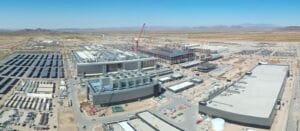Arizona’s commercial real estate market is on the path to recovery, but the climb is steep and slow-going, local brokers predict.
The Phoenix market experienced slight positive absorption of space in its too-many, too-empty properties last year, and the plodding progress will continue through 2011, says Craig Henig, senior managing director at CB Richard Ellis.
“I see modest improvements in each sector, but no gold rush,” Henig predicts. “We will be slower coming out of this recession (compared with the 1990s slump) because we can’t rely on construction and tourism.”
Those industries fueled Arizona’s economy for decades, generating jobs and spending throughout the marketplace.
But industry experts agree that with commercial and residential property vacancies at such a high level, construction won’t restart in the short term. And tourism, double-slammed by the recession and Arizona’s national image issues, has a slow, uphill slog back to normalcy.
All commercial real estate sectors suffered from the recession as rents plummeted, vacancies soared and foreclosures mounted, leaving lots of properties in limbo, Henig says.
The retail sector was hurt the most, followed by office and industrial, Henig says, and recuperation will happen in reverse order.
Retail commercial real estate in Metro Phoenix bottomed out in 2010, as local retailers shuttered locations and national companies put expansion plans on hold, says Cliff Johnston, Cassidy Turley | BRE Commercial senior vice president.
Vacancies, which historically hovered below 5%, sank to an alarming 12.3%, Johnston says. He expects that rate to near 11% by year-end.
“We’ve turned the corner,” Johnston says. “We expect a fairly slow but steady improvement this year.”
Denser areas of the Valley will fare best, while fringe communities, where retailers relied on rooftops that never materialized, will continue to founder, he adds.
Office properties saw a flurry of transactions in 2010, but flat, net absorption, says Bryon Carney, Cassidy Turley | BRE Commercial president.
Low rents prompted a “flight to quality,” Carney says, as Class B office users moved into more luxurious Class A digs.
In 2010, Phoenix Class A net absorption topped 500,000 SF, offset by 600,000 SF negative absorption of Class B and C space, he says.
For 2011, Carney expects smaller tenants to move into newly vacant Class B space. But he’s not expecting the 27% overall office vacancy to improve much this year. The good news, he says, is rents that continued to decline in 2010 should stabilize.
The industrial sector will continue to lead the recovery in 2011, says Andy Markham, Cassidy Turley | BRE Commercial executive vice president.
“In 2010, we had 4 MSF absorption, and we’ll see more in 2011,” Markham says.
The vacancy rate will improve from 14% “to low double digits by the end of 2011,” he predicts.
While Phoenix sorts out its skewed recovery, Tucson waits for the spillover, says Tim Prouty, managing director of CB Richard Ellis’ Tucson office.
Tucson has fewer vacancies and higher rents than Phoenix because it was not overbuilt prior to the recession, Prouty says. But Phoenix’s excess capacity and lower rents appear more attractive to companies looking to expand or locate new regional offices or industrial operations in Arizona, he adds. “We’re glad we’re not Phoenix, but Phoenix is our biggest challenge,” Prouty says.
He doesn’t expect much movement in Tucson’s office or industrial sectors in 2011. But retail is already showing “some select growth,” including new locations for big-box retailers Costco and Walmart.
Arizona’s commercial real estate experts cite several factors for their modestly positive outlook for 2011.
They include improvement in the national economy, a favorable tax structure compared with that of California and pressure for lenders and CMBS special servicers to shake loose desirable properties at current market value.
“There was anemic investment sales activity in 2010, but now more properties are coming to the market,” Henig says. “We’re hoping investment sales and leasing will balance out in late second quarter.”
There is pent-up demand for investors to purchase the lender-owned properties at the right price and enough tenants willing to lease space if rents are significantly low, says Pat Dempsey, Lee & Associates principal.
“Now we are seeing properties (for sale) in every corner of the Valley and in all property types,” Dempsey says. “We’re more bullish than we have been in two or three years.”
Still, Stanton Shafer, Cassidy Turley | BRE Commercial executive vice president, predicts sales of those properties will be more like a trickle than a flood in 2011, despite buyer interest.
Many lenders and CMBS servicers remember the RTC fire sales of the 1990s and are hesitant to lose potential money by selling too soon and too low, he says.
“There is an abundance of capital out there now,” Shafer says. “And there is more pressure to sell, and more properties in the pipeline. But there is no way to generalize (lender action). What we can say is there hasn’t been much so far, and in 2011 we expect more.”
Jeffrey Hartland, Cassidy Turley | BRE Commercial senior vice president, sums up the overall 2011 outlook: “The light at the end of the tunnel is no longer the train.”
For more information about Arizona’s commercial real estate market and the CRE companies mentioned in this story, visit:
cbre.com
brephoenix.com
lee-associates.com
AZRE Magazine March/April 2011



